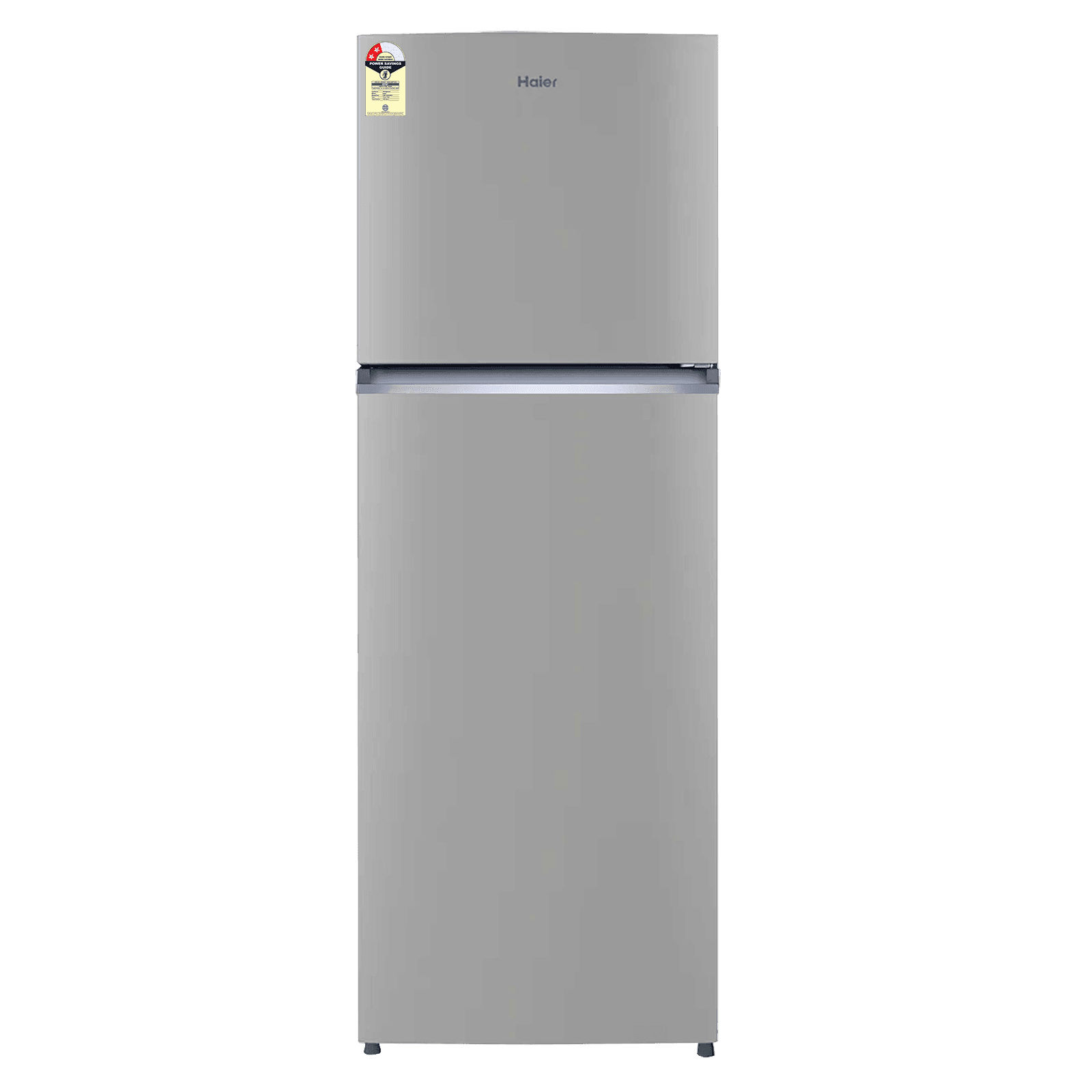
Home Appliances
•04 min read

Buy Haier HRF-2902 240 Litres 2 Star Frost Free Double Door Refrigerator with Stabilizer Free Operation (HRF-2902IEBS-P, Brushline Silver) online at best prices from Croma. Check product details, reviews & more. Shop now!
Imagine saving hundreds on your electricity bill simply by understanding how much energy your fridge consumes. This blog post explores the wattage of a 180 litre fridge and how you can calculate its power usage to achieve optimal savings on your monthly bills. By diving into the basics of fridge energy consumption and walking through practical calculation steps, you will feel empowered to make informed decisions when choosing and using an energy-efficient fridge. Read on to learn how to compute the refrigerator power rating, assess daily and monthly energy usage, and even estimate the overall electricity cost.
Fridge wattage is the measure of electrical power used by a refrigerator. It indicates how much energy is needed for the appliance to perform effectively. Knowing your fridge watt consumption not only helps in budgeting your monthly electricity expenses but also in selecting a model that aligns with your energy-saving goals. An energy-efficient fridge helps reduce household utility bills and has a smaller environmental footprint.
The energy your fridge consumes is affected by several factors. The size of the fridge, for instance, plays a significant role – a 180 litre refrigerator has specific power requirements compared to other sizes. Additionally, energy efficiency ratings, often reflected in star ratings, are key indicators of how power efficient a model is. The way you use your fridge also matters; frequent opening or overloading the fridge may result in higher energy consumption.
Typically, refrigerators across different sizes—such as 170-litre, 180-litre, 190-litre, and 200-litre models—have varying wattage ranges depending on their design and features. The differences in wattage can be attributed to advanced technologies like inverter compressors and enhanced insulation. Understanding these small fridge power requirements ensures that you select an appliance that meets your efficiency needs while keeping electricity usage in check.
Calculating the wattage of your refrigerator is straightforward. The formula to use is: Wattage = Voltage × Current. Begin by locating the voltage and current specifications on the fridge label or in the user manual. Multiplying these values together gives you the wattage. This information is essential for estimating your appliance's magnitude of electricity consumption and for determining potential cost savings over time.
For those who prefer a simpler method, several online wattage calculators are available. These tools allow you to input the relevant values, automatically computing the energy consumption. Reliable energy consumption calculators can simplify the math and provide both daily and monthly usage estimates with minimal effort.
Consider a 180 litre fridge that operates at 230 volts and draws around 0.5 amps of current. By applying the formula, the wattage equals 230 × 0.5, which is 115 watts. Estimating daily energy consumption involves multiplying the wattage by the hours of operation. If this fridge runs for 24 hours, the daily consumption approximates 2.76 kWh. Over a typical month, this results in about 82.8 kWh, a calculation that guides you in understanding your expected electricity expenses.
A kilowatt-hour (kWh) is a unit that measures the amount of electrical energy consumed. Converting your fridge’s wattage into kWh helps break down electricity usage into daily and monthly figures, which is useful when planning your budget. When you know your 180 litre refrigerator power usage in kWh, you can easily apply your local electricity rate to estimate costs.
To convert your wattage into kWh, divide it by 1000. Multiply the result by the number of hours the fridge runs each day. For example, if the fridge you calculated earlier uses 115 watts, that translates roughly into 0.115 kW. Running continuously, it consumes 2.76 kWh per day. If the local electricity rate is ₹12 per kWh, the fridge’s monthly cost can be approximated by multiplying the daily consumption by 30 days, and then by the rate; in this case, around ₹99 per month. Understanding refrigerator electricity usage in this manner enables you to plan your expenses with greater precision.
Electricity costs vary greatly depending on regional rates and usage habits. Energy-efficient features, such as precise temperature control and improved insulation, also impact consumption and therefore cost. These design elements reduce the overall wattage required by the appliance, leading to measurable savings on your electricity bill.
Did You Know? A 180 litre fridge with a 5-star energy rating can consume up to 40% less electricity compared to a 1-star model. Investing in an energy-efficient appliance not only reduces your costs significantly but also lowers your carbon footprint.
When shopping for a new refrigerator, look at key energy-saving features. An inverter compressor, improved insulation, and solid energy ratings are all noteworthy traits. These features collectively contribute to lowering your home appliance energy consumption, ensuring that the appliance operates efficiently. In addition to technical features, user-friendly support—including express delivery and reliable after-sales service—is essential for peace of mind. Tata Neu provides opportunities to earn NeuCoins on your purchases, enhancing your shopping rewards while you shop smartly.
To maximise the efficiency of your fridge, there are several effective practices to adopt. Optimize the temperature settings as recommended in the user manual, keep the fridge well maintained by cleaning its coils and checking the door seals regularly, and avoid frequent door openings or unnecessary overloading. These practices not only help in reducing energy consumption but also extend the appliance's longevity, contributing to overall home appliance energy efficiency.
A typical 180 litre fridge uses around 100-200 watts per hour, depending on its energy efficiency rating and features.
A 170 litre refrigerator generally uses slightly less power, ranging from 90-180 watts per hour.
A 190 litre refrigerator typically consumes between 120-250 watts per hour, largely according to its model and energy rating.
You can check the label on the fridge or refer to the user manual for the voltage and current specifications, then multiply these values to calculate the wattage.
In summary, understanding the 180 litre fridge wattage is indispensable for accurately calculating energy consumption and planning for electricity costs. With a clear grasp of the principles behind wattage calculation, any household can take smart steps toward reducing costs and enhancing energy efficiency. Whether updating your appliance or simply optimising usage, these insights provide a foundational guide to ensuring a more cost-effective and environmentally friendly home. Discover more about home appliance energy efficiency and enjoy rewarding benefits as you invest in smarter living choices with Tata Neu.